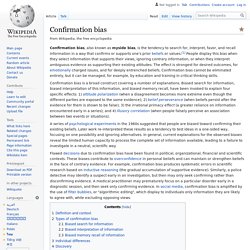

Shape Up At The Office: 6 Healthy Habits For The Workplace. Even if you spend an hour each day at the gym, you spend at least eight times that amount at work.

Sitting. Snacking. Stressing. None of which furthers your personal fitness agenda. I'm not saying you should throw your papers in the air and walk out the door to become a personal trainer, professional mountain bike racer, or bear wrestler. By making your office a friendly place for health and fitness, you'll be able to spend more time working toward your goals. Fire Your Chair and Replace it with an Exercise Ball Your old office chair sees more of your backside than probably anything or anyone in the world. Take some wear off your spine by sitting on an exercise ball. If you're struggling to stay upright on an exercise ball, try sitting on it for one-hour intervals until you can remain upright all day. Stock a Mini-fridge/Cooler If you have an office, invest in a mini-fridge. It takes 10 minutes to prepare a healthy lunch the night before work or pack leftovers from dinner.
Coffee Break? Where Consciousness Comes From. Juggling by numbers: How notation revealed new tricks. 19 December 2012Last updated at 20:12 ET By Laura Gray BBC News The mathematical formula of juggling Juggling is usually associated with brightly coloured balls and clowning around, but it has more connections than you might think with the world of numbers.

Colin Wright is a mathematician who in the 1980s helped develop a notation system for juggling while at Cambridge University. He was frustrated that there was no way to write down juggling moves. "There was a juggling move called Mills Mess and when I tried to write it down I couldn't. The system he helped devise became known as Siteswap.
These sequences encoded the number of beats of each throw, which is related to their height and the hand to which the throw is made. Sequences of numbers are used to denote particular juggling moves also known as "Siteswap" The higher the ball is thrown, the bigger the number, so throwing a four means you are throwing the ball higher than a two. The numbers are then written into sequences.
The Most Shocking Video of the Tsunami in Japan - El video más impactante del tsunami en Japón! Confirmation bias. Tendency of people to favor information that confirms their beliefs or values Confirmation bias, also known as myside bias, is the tendency to search for, interpret, favor, and recall information in a way that confirms or supports one's prior beliefs or values.[1] People display this bias when they select information that supports their views, ignoring contrary information, or when they interpret ambiguous evidence as supporting their existing attitudes.

The effect is strongest for desired outcomes, for emotionally charged issues, and for deeply entrenched beliefs. Confirmation bias cannot be eliminated entirely, but it can be managed, for example, by education and training in critical thinking skills. Confirmation bias is a broad construct covering a number of explanations. A series of psychological experiments in the 1960s suggested that people are biased toward confirming their existing beliefs. Definition and context[edit] Synchronicity. Synchronicity is the occurrence of two or more events that appear to be meaningfully related but not causally related.

Synchronicity holds that such events are "meaningful coincidences". The concept of synchronicity was first defined by Carl Jung, a Swiss psychiatrist, in the 1920s.[1] During his career, Jung furnished several slightly different definitions of it.[2] Jung variously defined synchronicity as an "acausal connecting (togetherness) principle," "meaningful coincidence," and "acausal parallelism. " He introduced the concept as early as the 1920s but gave a full statement of it only in 1951 in an Eranos lecture.[3] In 1952, he published a paper "Synchronizität als ein Prinzip akausaler Zusammenhänge" (Synchronicity – An Acausal Connecting Principle)[4] in a volume which also contained a related study by the physicist and Nobel laureate Wolfgang Pauli.[5] In his book Synchronicity: An Acausal Connecting Principle, Jung wrote:[6]
ScienceBlogs - Where the world turns to talk about science. TED Science.
Pscychology. Future. Universe. Virtual particle. In physics, a virtual particle is a transient fluctuation that exhibits many of the characteristics of an ordinary particle, but that exists for a limited time.

The concept of virtual particles arises in perturbation theory of quantum field theory where interactions between ordinary particles are described in terms of exchanges of virtual particles. Any process involving virtual particles admits a schematic representation known as a Feynman diagram, in which virtual particles are represented by internal lines. [1][2] Virtual particles do not necessarily carry the same mass as the corresponding real particle, although they always conserve energy and momentum.
The longer the virtual particle exists, the closer its characteristics come to those of ordinary particles. They are important in the physics of many processes, including particle scattering and Casimir forces. Antiparticles have been proven to exist and should not be confused with virtual particles or virtual antiparticles.
Biology. Environment. Neil deGrasse Tyson and Neil Gaiman - Religion vs. Science, God of the Gaps. Neil deGrasse Tyson and Neil Gaiman Describe Vision & Brilliance.